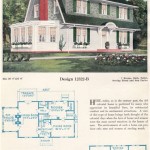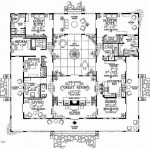Essential Aspects of House Drawing Plans
House drawing plans are architectural blueprints that provide a comprehensive layout of your future home. They convey crucial information about the structure, dimensions, and arrangement of spaces within your dwelling. Whether you're embarking on a custom build or renovating an existing property, understanding the essential aspects of these plans is paramount.
1. Floor Plans
Floor plans are the backbone of house drawing plans. They offer a bird's-eye view of each floor, showcasing the placement of rooms, hallways, staircases, and other features. These plans adhere to specific scales, ensuring accurate measurements and proportions.
2. Elevations
Elevations are vertical views of the exterior walls of a house. They depict the facade, roof pitch, windows, and doors, providing insight into the aesthetic appeal of your home from different angles. These drawings are typically presented in the form of front, rear, left, and right elevations.
3. Sections
Sections are vertical cuts through a house, revealing the interior construction and spatial relationships between different levels. They illustrate the height of rooms, ceiling heights, and the placement of mechanical systems. Sections are crucial for understanding the functional aspects of your home.
4. Roof Plan
The roof plan provides a detailed view of your roof, including its shape, pitch, and materials. It outlines the placement of skylights, chimneys, and vents, ensuring proper drainage and ventilation. This plan is essential for calculating the amount of roofing materials required.
5. Site Plan
A site plan maps out the relationship between your house and its surrounding property. It depicts the location of the house on the lot, driveways, walkways, patios, landscaping, and any other outdoor features. The site plan helps in determining the optimal placement of your home and outdoor living spaces.
6. Electrical Plan
The electrical plan illustrates the layout of electrical outlets, switches, lighting fixtures, and circuits throughout the house. It specifies the locations of electrical panels, grounding systems, and any special electrical requirements. This plan ensures that your home has adequate and safe electrical capacity.
7. Plumbing Plan
The plumbing plan outlines the water supply system, drainage network, and fixtures within your home. It depicts the location of faucets, toilets, sinks, showers, and water heaters. This plan is vital for ensuring proper water flow, waste removal, and hot water availability.
8. HVAC Plan
The HVAC plan showcases the layout of heating, ventilation, and air conditioning (HVAC) systems in your house. It indicates the placement of air ducts, registers, vents, and the location of the HVAC unit. This plan optimizes the comfort and energy efficiency of your home.
Conclusion
House drawing plans are indispensable tools for the design and construction of your dream home. By understanding the essential aspects of these plans, you can effectively communicate your vision to architects, builders, and contractors. Thoroughly reviewing and comprehending these plans ensures that your house meets your exact requirements, aesthetic preferences, and functional needs.

Floor Plan Creator And Designer Free Easy App

Where You Can Buy House Plans Live Home 3d

House Plan Drawing Everything You Need To Know

Easy Home Building Floor Plan Cad Pro

Home Floor Plans House Plan Drawings

Floor Plan House Sketch Stock Vector Ilration Of Building 52483697 Plans

2d Floor Plans Home Plan Drawing House

Pin On Design Project

Customize 2d Floor Plans

How To Read House Plans Floor Building In 10 Minutes Archid








